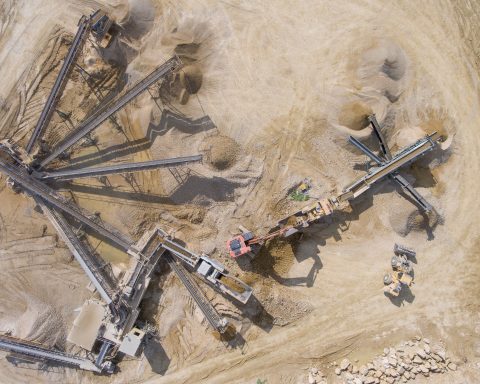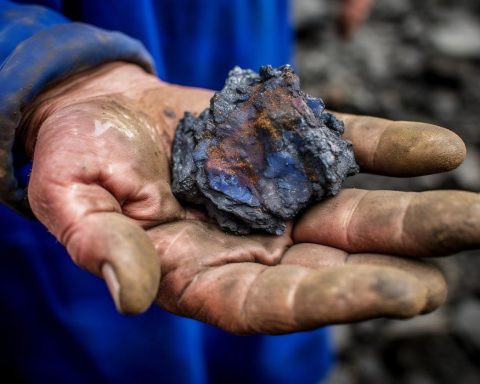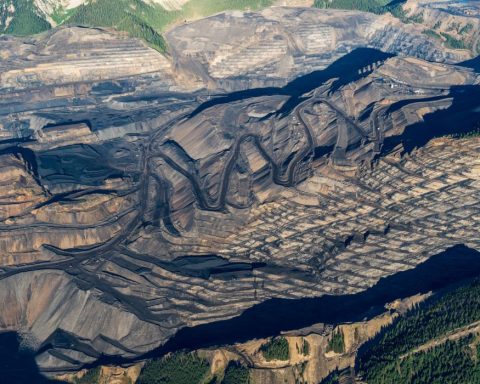The Canada Nickel Company is a fledgling Ontario mining firm with a handful of leases in mineral-rich northern Ontario and ambitious plans to dig for nickel, cobalt and iron. So it represents a particularly audacious move that the company recently announced the creation of a wholly owned subsidiary called NetZero Metals, charged with the task of mining those metals without a carbon footprint. Green boasts can be a little suspect, especially since the net-zero goal is one that established players in industries like steel and oil have placed at the far end of a 30-year ramp.
But this boast is worth more consideration than usual. Canada Nickel’s bold plan could have serious implications far beyond its operations in Timmins. Just weeks before Canada Nickel launched NetZero Metals, the European Union unveiled its pandemic recovery plan. It’s one of the grandest gestures in the history of a political body known mostly for stuffy bureaucratic pronouncements – more than €1.8 trillion in grants and loans, equivalent to nearly 5% of the EU’s GDP. And it leans heavily into a global energy transition whose standard bearer, Germany, was a lead partner in selling the other 26 member nations on the plan. Fully 30% of the package will be spent on initiatives aimed at “climate concerns,” with a similar focus for the other trillion dollars in the EU’s upcoming budget (which covers EU initiatives from 2021 to 2027, not just the pandemic recovery). France – the other lead partner in the EU deal – has since announced that it will spend €30 billion of its domestic recovery package on clean energy initiatives as well.
“With nickel as a preferred metal to power the clean energy revolution,” said Canada Nickel CEO Mark Selby at the launch of NetZero Metals, “our commitment to net-zero carbon production is the right step to take for the environment, for consumers, and for our investors.” You have to assume he was looking past Ottawa and not even glancing in Washington’s direction when he said it. Canada Nickel’s bet is that the EU’s green-saturated recovery is the future of the global economy and the best target for even an established heavy industry like mining. Manufacturing electric vehicles and renewable energy equipment, after all, requires an awful lot of nickel and cobalt.
Now, to paraphrase the great philosopher Ferris Bueller, Canadians aren’t European, nor do we plan on being European, so who gives a crap if they’re green industrialists? Canada’s largest trading partner, by a margin so wide as to be irreducible from the perspective of any particular government’s policy agenda, is the United States. (The current numbers are about 75% of all exports and 51% of all imports; no other nation has more than a 13% share of either end of Canada’s trade.) This is as true for nickel and iron as it is for softwood lumber, auto parts and pro hockey players.
But as one of those exported hockey stars once so famously put it, the way to win – in business as in hockey – is to focus not on where the puck is but on where it is going. And that’s where Canada Nickel’s net-zero bet comes in. If Canada’s heavy industries want to steer clear of a rust-belt scenario, they need to move now to where this century’s best economic opportunities are emerging – and those are increasingly found in the fast-growing cleantech sector. What’s more, Canada’s federal government has a net-zero pledge of its own. The deadline is a distant mid-century, to be sure, but Canada stands now at the bottom of that long ramp alongside numerous EU countries, leading U.S. jurisdictions like California and New York, and pace-setting companies like Google and Microsoft.
And more than that, Canada has a powerful set of assets to bring to the worldwide net-zero movement – its world-class mix of abundant natural resources and low-emissions electricity grids. Nationwide, 81% of Canada’s electricity is derived from non-emitting sources, with hydro powerhouses like British Columbia and Quebec already boasting virtually emissions-free grids. Hydro-Québec, for example, now actively courts data-centre clients on the merits of its clean power. And the choice of Montreal for the world’s first emissions-free aluminum production facility (Elysis, a joint venture of Rio Tinto and Alcan, catalyzed by Apple’s demand for zero-carbon aluminum) was a direct result of its climate-friendly virtues.
“The race for clean materials is certainly one that Canada could play a role in and could be important for Canada,” says Sarah Petrevan, policy director at Clean Energy Canada. Beyond the mineral wealth touted by Canada Nickel, she says, Canadian exports like aluminum, steel, concrete and fertilizer could all be valuable in markets like the EU where a smaller carbon footprint will increasingly impart competitive advantage.
And Canada Nickel is far from alone in its ambitious gaze to that low-carbon horizon. In British Columbia, Lafarge has launched plans for the nation’s lowest-carbon cement plant, bringing in carbon capture and sequestration (CCS) technology and fuel from non-recyclable waste. In Alberta, oil sands producer Cenovus Energy has a net-zero pledge of its own, and numerous companies are making big investments in everything from CCS to hydrogen fuel to shrink-the-oil-patch’s footprint. In northern Ontario, Goldcorp has opened the world’s first emissions-free gold mine, converting all on-site equipment to electric power. The list goes on, and many eyes in such firms are looking to export markets as climate plans grow stronger.
Beyond direct trade, though, Petrevan argues that the EU’s green recovery is the right “level of ambition.” If Canada’s climate goals – its 2030 Paris pledge as well as the net-zero target – are at all serious, then Canadian aspirations need to catch up with European plans. “The EU is the gold standard by which Canada should be judged,” Petrevan says.
Canada’s own pandemic recovery plans, then, represent a golden opportunity to bring our climate policies in line, finally, with our lofty goals. Government procurement rules, for example, don’t yet oblige the government to purchase the kinds of low-carbon materials Canada needs to be producing more of to hit its climate targets – and encourage the growth of companies like Canada Nickel.
“We’ve got everything we need to succeed,” says Chris Bataille, a researcher at the Institute for Sustainable Development and International Relations in Paris who has worked on decarbonization policy in Canada and internationally for more than a decade. “We’ve just got to reorient our efforts.”
Chris Turner’s most recent book is The Patch: The People, Pipelines, and Politics of the Oil Sands.
With the support of the Embassy of the Federal Republic of Germany in Canada.







